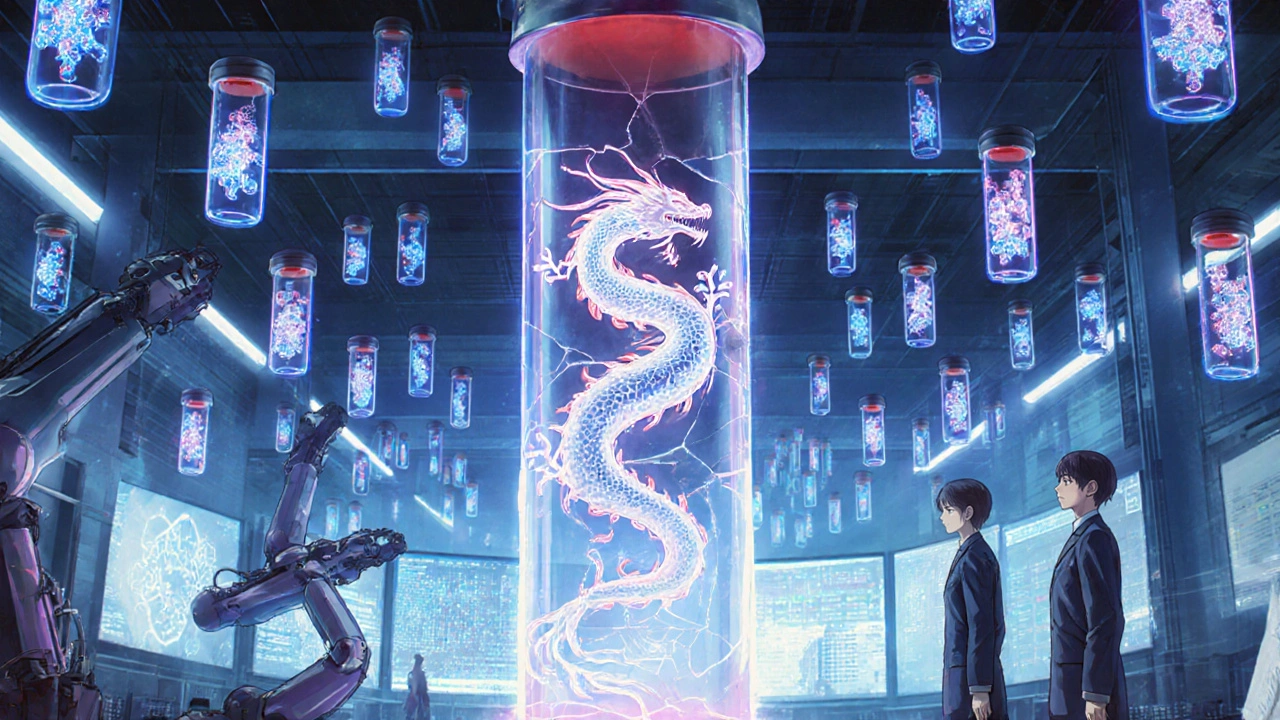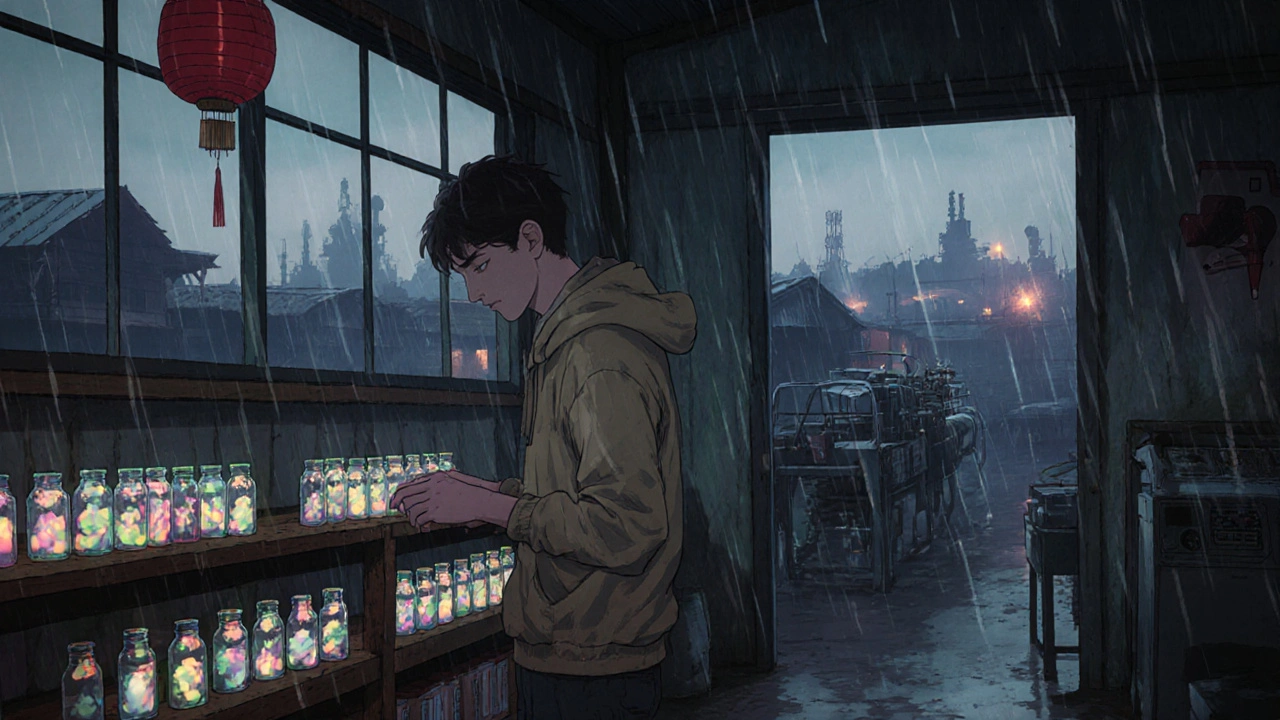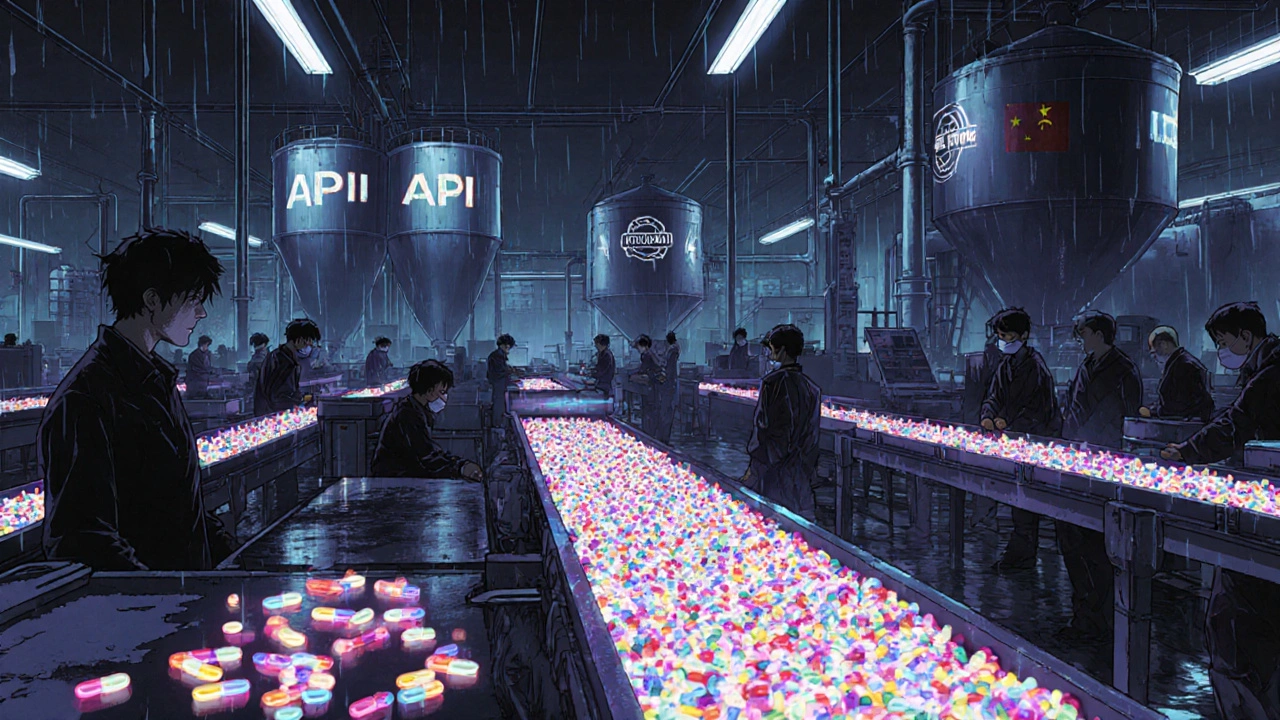When you pick up a bottle of antibiotics, blood pressure medicine, or diabetes pills in the U.S., Europe, or Africa, there’s a good chance it came from Asia. Two countries-India and China-control the backbone of the global generic drug supply. Together, they make over half the world’s generic medicines and nearly 70% of the active ingredients that power them. But they don’t work the same way. India is the volume king, churning out billions of low-cost pills. China is the value king, making the raw materials and moving into high-tech biologics. And behind them, smaller economies like Vietnam and Cambodia are carving out their own niches.
India: The Pharmacy of the World
India’s rise as a generic drug powerhouse didn’t happen by accident. In the 1970s, the government changed its patent laws to allow companies to copy drug formulas as long as they used a different manufacturing process. That opened the door for local firms to produce life-saving medicines at a fraction of the cost. Today, India supplies more than 60% of the world’s vaccines and 40% of the generic drugs used in the U.S. market.
Its strength lies in volume and speed. Indian manufacturers can turn around custom drug orders in as little as 14 days, something Chinese suppliers rarely match. They also offer 24/7 customer support, which has cut operational headaches for U.S. pharmacy chains by 60%. With over 3,000 FDA-approved manufacturing sites, India has more approved facilities than any other country. Gujarat and Maharashtra are the powerhouses, accounting for 60% of production.
But there’s a catch. India still depends on China for 68% of its active pharmaceutical ingredients (APIs). Despite the $2.8 billion invested in digital health and the 2024 ‘Pharma 2047’ plan to cut that reliance to 30% by 2030, India’s domestic API production only meets 18% of its needs. That makes the whole system vulnerable. If China cuts exports-even temporarily-India’s supply chain could stall.
Indian firms also lag in innovation. Only 1.2% of their exports are novel drugs. Most of their business is in simple generics: pills, capsules, syrups. They dominate in oncology generics, holding 35% of the global market, but they’re not building the next generation of treatments. That’s where China steps in.
China: The Hidden Engine Behind the Drugs
China doesn’t just make pills-it makes the building blocks of pills. It controls 70% of the global API market. That means almost every generic drug you take, no matter where it’s packaged, likely contains Chinese-made ingredients. China’s $80.4 billion pharmaceutical market in 2024 is the second largest in the world by value, and it’s growing faster in absolute dollars than India’s, even if India’s growth rate looks higher.
China’s advantage isn’t just scale-it’s vertical integration. Since joining the WTO in 2001, it has moved up the value chain. In 2024, 25% of its pharmaceutical output was traditional Chinese medicine, 10% was biologics, and 5% was innovative drugs. That’s a big shift from just a decade ago, when China was mostly exporting cheap chemicals.
Between 2020 and 2024, 45% of new pharma facilities built in China were for biologics. The government poured $150 billion into innovation under its 14th Five-Year Plan, with 40% of that going to biologics R&D. Now, Chinese companies are making biosimilars-highly complex copies of cancer and autoimmune drugs-that sell for 30-50% less than the originals. These aren’t cheap pills. They’re high-tech, high-margin products.
But quality remains a concern. In 2024, the U.S. FDA issued 142 warning letters to Chinese manufacturers, compared to 87 for Indian ones. Many of these were about data integrity, contamination, or poor recordkeeping. That’s why big buyers like German healthcare companies now dual-source: they get 40% of their generics from India and 30% from China, just to reduce risk. It adds 18% to supply chain costs, but it keeps shelves stocked.
Emerging Economies: The New Players
While India and China fight for dominance, smaller Asian countries are quietly building their own roles in the ecosystem. Vietnam, for example, is becoming a specialist in antibiotic intermediates. Its pharmaceutical exports jumped 24.7% in 2024 to $2.8 billion, thanks to targeted investments in fermentation and chemical synthesis. It doesn’t make finished pills, but it makes the key parts that go into them.
Cambodia, meanwhile, has focused on medical device assembly. With low labor costs and preferential trade deals under ASEAN, it grew its medical device sector by 32% last year, hitting $1.2 billion in exports. It’s not making drugs-but it’s making the syringes, IV bags, and testing kits that go with them.
These countries aren’t trying to replace India or China. They’re filling gaps. They offer faster turnaround on niche products, lower minimum order sizes, and fewer regulatory hurdles for small buyers. For a mid-sized distributor in Latin America or Eastern Europe, sourcing antibiotics from Vietnam or syringes from Cambodia is often cheaper and faster than going through a giant Indian or Chinese supplier.

Regulation and Risk: Who Can You Trust?
Regulatory standards are tightening everywhere. The U.S. FDA’s 2024 ‘Project BioSecure’ now requires full traceability of APIs from raw material to finished pill. That means manufacturers must track every batch, every ingredient, every step. For Indian and Chinese suppliers, this could raise compliance costs by 18-22%.
India’s regulatory system is fragmented. There are 17 different agencies across federal and state levels, leading to delays and inconsistent enforcement. Forty-seven percent of procurement officers say they’ve faced “significant delays” due to state-level bureaucracy. China, by contrast, has a centralized system with only 8 national agencies. It’s faster to approve-but harder to challenge.
Trust scores reflect this. On Trustpilot, Indian pharmaceutical suppliers average 4.1 out of 5 based on over 1,200 reviews. Chinese suppliers score 3.8. Indian firms win on communication. Chinese firms win on price. But when FDA warning letters pile up, price doesn’t matter as much as reliability.
Who Wins in the Long Run?
India’s future hinges on its population. Two-thirds of its people are under 35. That’s a massive domestic market for drugs-and a growing pool of young engineers and scientists. If India can turn that demographic dividend into innovation, it could close the gap with China by 2035. The $13.4 billion investment in 12 new API parks could reduce dependence on China. But it’s a long road.
China’s future is in biologics. It’s not just making cheaper pills anymore. It’s making complex, high-value drugs that can compete with Western brands. With $22.8 billion allocated under ‘Healthy China 2030’ to push biologics to 25% of exports by 2030, China is betting big on the future of medicine.
Both countries are at risk of overcapacity. S&P Global warns that by 2026-2027, too much API production could trigger 15-20% price drops. That would hurt profits, especially for smaller manufacturers.
For buyers, the smart move isn’t choosing one over the other. It’s using both. A U.S. pharmacy chain that sources 40-60% of its generics from India and 25-35% from China is better protected than one relying on just one source. India gives you speed, flexibility, and communication. China gives you scale, price, and high-end products.
The real winners won’t be the biggest producers. They’ll be the ones who understand the system: the distributors who can navigate India’s chaos, the buyers who know how to audit Chinese factories, and the startups that use Vietnam’s antibiotics or Cambodia’s devices to build something new.

What This Means for You
If you’re a patient, you’re already benefiting. Generic drugs from Asia keep medications affordable. A month’s supply of metformin might cost $5 in the U.S. because it’s made in India. A cancer drug that costs $10,000 in the U.S. might be available as a biosimilar for $4,000 because China made the active ingredient.
If you’re a healthcare provider, know that supply chains are fragile. A single factory shutdown in Gujarat or Jiangsu can ripple across continents. Diversify your suppliers. Don’t lock into one country.
If you’re in business, the opportunity is in the gaps. Build relationships with Vietnamese antibiotic makers. Partner with Cambodian device assemblers. Help Indian firms improve their data systems. Help Chinese firms meet FDA standards. The global generic market is worth $448.6 billion-and it’s only getting bigger.
Why is India called the 'pharmacy of the world'?
India earned that title because it produces and exports more generic medicines by volume than any other country. It supplies over 60% of the world’s vaccines and 40% of U.S. generic drug demand. Its ability to make low-cost, high-volume drugs-combined with FDA-approved manufacturing sites and fast turnaround times-makes it the go-to source for affordable medicines worldwide.
Does China make more generic drugs than India?
By volume, India leads in finished generic drugs. But China makes more of the raw ingredients-active pharmaceutical ingredients (APIs)-that go into those drugs. China produces about 70% of the world’s APIs, while India produces most of the final pills. So while India ships more finished products, China controls the foundation of the supply chain.
Are Indian generic drugs safe?
Yes, most are. Over 3,000 Indian manufacturing facilities are FDA-approved, and many meet WHO-GMP standards. However, quality can vary because India has 17 different regulatory bodies, leading to inconsistent enforcement. Buyers often test batches more frequently when sourcing from India to manage risk.
Why do U.S. companies still buy from China despite FDA warnings?
Because China offers lower prices and unmatched scale in API production. Even with 142 FDA warning letters in 2024, no other country can match China’s output or cost efficiency. Many U.S. companies use a dual-sourcing strategy: buying most from India for finished drugs and some from China for raw materials, balancing cost and risk.
Can emerging economies like Vietnam replace India and China?
Not yet, and not in the same way. Vietnam and Cambodia don’t have the scale or infrastructure to replace India or China. But they’re becoming essential niche players. Vietnam specializes in antibiotic intermediates, and Cambodia assembles medical devices. For buyers needing specific products in smaller quantities, they offer faster, more flexible options.
What’s the biggest threat to the Asian generic drug market?
Overproduction. Both India and China are investing heavily to become self-sufficient in API production. But if too many factories come online at once, supply will outpace demand, leading to price drops of 15-20% by 2027. That could hurt profits, force closures, and destabilize global supply chains.
What Comes Next?
The next five years will be decisive. India’s push for API self-sufficiency could reduce its reliance on China-but it will take billions more in investment and years of execution. China’s shift to biologics could make it the global leader in high-end medicines, not just low-cost pills.
For now, the system works because it’s balanced. India gives you speed and volume. China gives you scale and innovation. Emerging economies give you flexibility. The real challenge isn’t choosing one country over another-it’s managing the whole network. The future of affordable medicine doesn’t depend on one nation. It depends on how well the world learns to work together.


Ryan C
November 25, 2025 AT 20:24India’s 3,000+ FDA-approved sites? That’s not luck-it’s systemic rigor. China makes the APIs, sure, but India’s logistics are a masterclass in scalability. And yes, they still rely on China for 68% of APIs-but that’s like owning a bakery that buys flour from one supplier. Doesn’t make your croissants any less delicious. 🥐
Dan Rua
November 26, 2025 AT 10:21Really appreciate this breakdown. I’ve been sourcing generics for our clinic and the India-China balance is everything. We do 50/50 now-India for speed, China for cost on bulk API orders. It’s not perfect, but it’s stable. 😊
Douglas Fisher
November 26, 2025 AT 20:28It’s fascinating how the regulatory fragmentation in India-17 agencies, inconsistent enforcement-creates both vulnerability and resilience. The delays are real, but the sheer number of compliant facilities means that even if one state falters, another picks up the slack. Meanwhile, China’s centralized system is efficient, but… if one factory gets flagged, the entire pipeline shudders. It’s a trade-off between chaos and control.
And let’s not forget: the FDA’s 142 warning letters to China? Most are about documentation, not contamination. That’s fixable. It’s not a quality crisis-it’s a paperwork crisis.
Also, the fact that Vietnamese antibiotic intermediates are now filling niche gaps? That’s innovation through specialization. Not replacing giants-complementing them. Brilliant.
And the demographic dividend in India? Under-35 population? That’s not just a statistic-it’s a pipeline of engineers, chemists, and entrepreneurs who will eventually turn volume into innovation. India’s not behind. It’s in the middle of a quiet revolution.
China’s biologics push? Yes, it’s ambitious. But biologics require not just capital, but decades of clinical trust. Western pharma still hesitates. India has that trust. It’s just… not yet building the next-gen drugs. But give it time.
The real winner? The distributors who understand this ecosystem. Not the biggest players. The smartest connectors.
And for patients? Thank you, Asia. Your generics saved my father’s life. Twice.
Stephanie Deschenes
November 28, 2025 AT 17:05It’s easy to see India and China as rivals, but they’re really partners in a global supply chain. One makes the engine, the other builds the car. And the smaller players? They’re the mechanics keeping everything running. We need all of them.
Vanessa Carpenter
November 30, 2025 AT 00:43So… China makes the stuff, India packages it, and Vietnam makes the little parts you didn’t even know you needed? Wild. I just take my metformin and assume it’s magic. Turns out it’s just… global cooperation. Who knew?
Bea Rose
November 30, 2025 AT 11:19China’s FDA warnings? 142. India’s? 87. The math is simple: China cuts corners. India doesn’t. End of story.
Michael Collier
November 30, 2025 AT 20:24It is imperative to recognize that the structural dynamics of pharmaceutical production in Asia are not merely economic phenomena, but rather complex geopolitical and infrastructural architectures that underpin global public health equity. The bifurcation between API production and finished dosage form manufacturing represents a strategic division of labor that, while efficient, introduces systemic fragility. Furthermore, the regulatory asymmetry between centralized Chinese oversight and decentralized Indian governance necessitates a calibrated, risk-mitigated procurement strategy. To rely exclusively upon either jurisdiction is to engage in an act of institutional hubris.
Shannon Amos
December 1, 2025 AT 23:57So China makes the magic powder, India turns it into pills, and we all just pretend we don’t know where the powder came from? 😏 Classic. Also, ‘Pharma 2047’? Sounds like a Netflix docu-series. I’ll binge it after I finish ‘The Great API Heist’.
Wendy Edwards
December 3, 2025 AT 22:23Y’all act like India’s gonna fix its API problem overnight… but lemme tell ya, my cousin works in a Mumbai lab and they’re pulling all-nighters to scale up. It’s messy, it’s slow, but they’re trying. And China? They’re not just making pills-they’re making the future of cancer meds. So yeah, maybe we need both. Maybe we need Vietnam too. It’s not about picking sides, it’s about keeping people alive. 💪
Jaspreet Kaur
December 4, 2025 AT 12:07India is not just a pharmacy it is a philosophy of accessibility. We make medicine for the many not the few. China builds the bones. We give them skin. And the world still calls us the pharmacy because we never forgot who we serve. The future is not in patents it is in presence. Let us grow. Let us stumble. But do not ask us to stop.
Gina Banh
December 6, 2025 AT 11:55Overcapacity is the real threat. 2027 price drops? That’s not a market correction-it’s a collapse waiting to happen. And when it does, the small distributors in Latin America? They’ll be the first to get cut off. India and China will survive. Everyone else? Not so much. We need global coordination, not just dual sourcing. This isn’t supply chain management. It’s a global health emergency waiting for a headline.